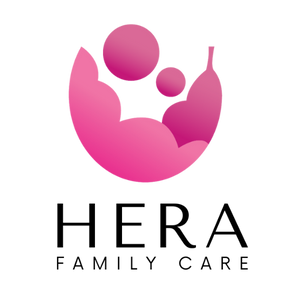
5 Steps to Financially Prepare for Parenthood by Aunjane Johnson
Here are some helpful tips on preparing for a baby

Collaboration with Maria Pavli, Midwife, MSc Cand
A Caesarean section or CS is a surgical procedure in which an incision is made in the abdominal and uterine wall in order to extract the fetus and placenta. It is applied in those cases where vaginal delivery is not possible or poses a risk to the mother or the fetus. Although the caesarean section may be elective/planned, in many cases the need for it may not be apparent until labour has commenced.
The most common indications of a caesarean are the following:
What type of anaesthesia is used during Caesarean Section?
The preferred option is regional anaesthesia, whether it is epidural or spinal. In emergency situations, when there is not the necessary time to apply regional aneasthesia, general anaesthesia is used.
How is a caesarean section performed?
Initially, anaesthesia is performed, preferably regional. A screen or a curtain is erected so that the patient cannot see the operation. A urinary catheter is placed in the bladder once the anaesthesia is working so she will not feel it.
In recent years, caesarean sections are performed with a transverse incision in the lower part of the abdomen of approximately 8-10cm. This incision offers a better aesthetic result than vertical incisions, because it is usually hidden below the height of the bikini line. It is also much safer for subsequent pregnancies.
Then the layers of the abdominal wall are opened in order to reach the uterus. The uterine wall is also opened with a low transverse incision. Although it is technically more difficult, this method is safer for subsequent pregnancies, since vertical incisions in the uterus have a greater risk of rupture.
This is followed by the birth of the baby, the clamping and cutting of the umbilical cord and the receipt of the newborn by the paediatrician or midwife. The newborn is usually placed in an open incubator which is usually located near the mother. There they are dried and if everything is well they are placed for a while on their mother. If it is planned to take stem cells, it is now performed from the umbilical cord of the placenta. If not, the placenta is removed whole along with its membranes.
Then the uterine wall is sutured with a synthetic absorbable suture (stitch). The remaining layers are closed sequentially in order to fully restore the anatomy of the area. The skin is sutured with an intradermal (in the skin) plastic stitch which is also absorbable. This achieves an excellent aesthetic result and does not require suture removal at a later time.
During caesarean, except in cases of general anaesthesia, the patient may feel some pressure from the manipulations of the medical team, while in some cases there may be nausea, dizziness or vomiting.
The whole process usually takes about an hour.
Breastfeeding and cesarean section
None of the types of anaesthesia used for caesarean section affects or is a contraindication for breastfeeding.
The postoperative course after caesarean section
After a caesarean, the hospital stay lasts about three days, as in the case of other surgeries. However, we should not underestimate the consequences of caesarean and the observance of adequate rest. Please note that: Along with postpartum discomfort you may experience blood loss and repositioning of the uterus.
Even after a caesarean, a perineal rehabilitation program may be needed, as in the case of vaginal birth. The pelvic floor, in fact, may be tired from the pregnancy. Speak to your doctor or midwife.
You can start a light exercise, which does not use your abdominal muscles, as long as the incision rhealing is at an advanced stage. Also, in this case, consult your doctor.
Come to our childbirth preparation classes and opt for our postnatal care service at home or our perineal rehabilitation workshop, provided by skilled midwives from Hera Family Care.

Here are some helpful tips on preparing for a baby

Menopause is a natural biological process that marks the completion
Stay in touch with us for more articles and publications.
© All rights reserved by Hera Family Care. Designed and Developed by Cybeem Technologies
